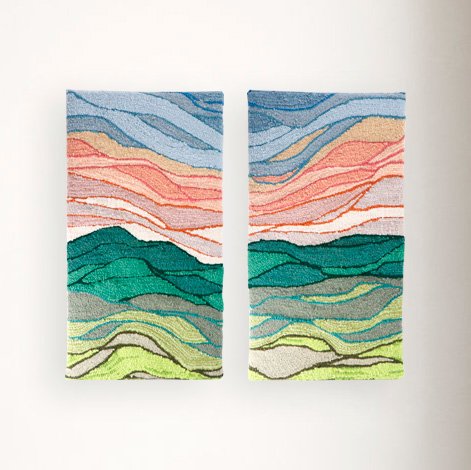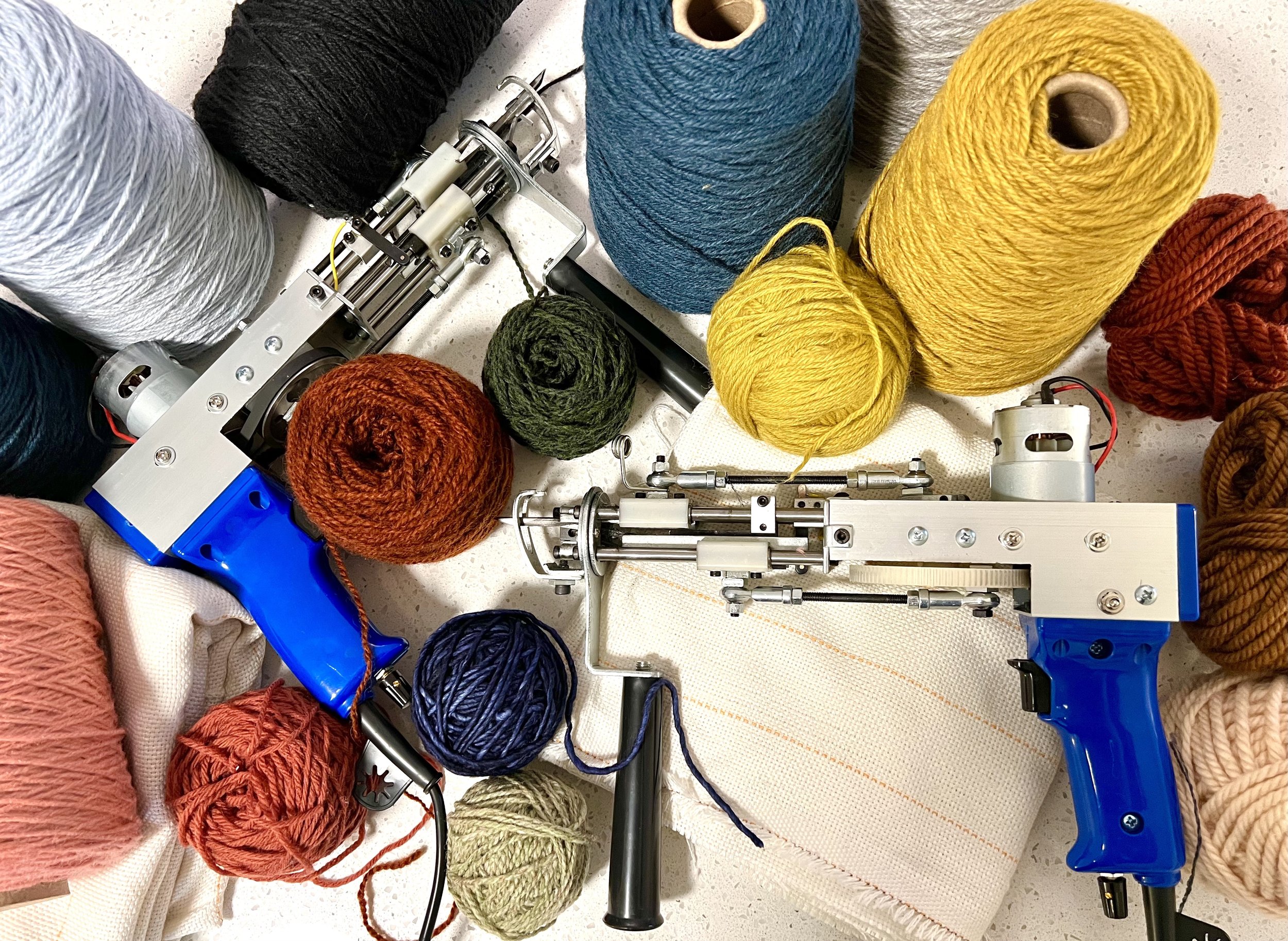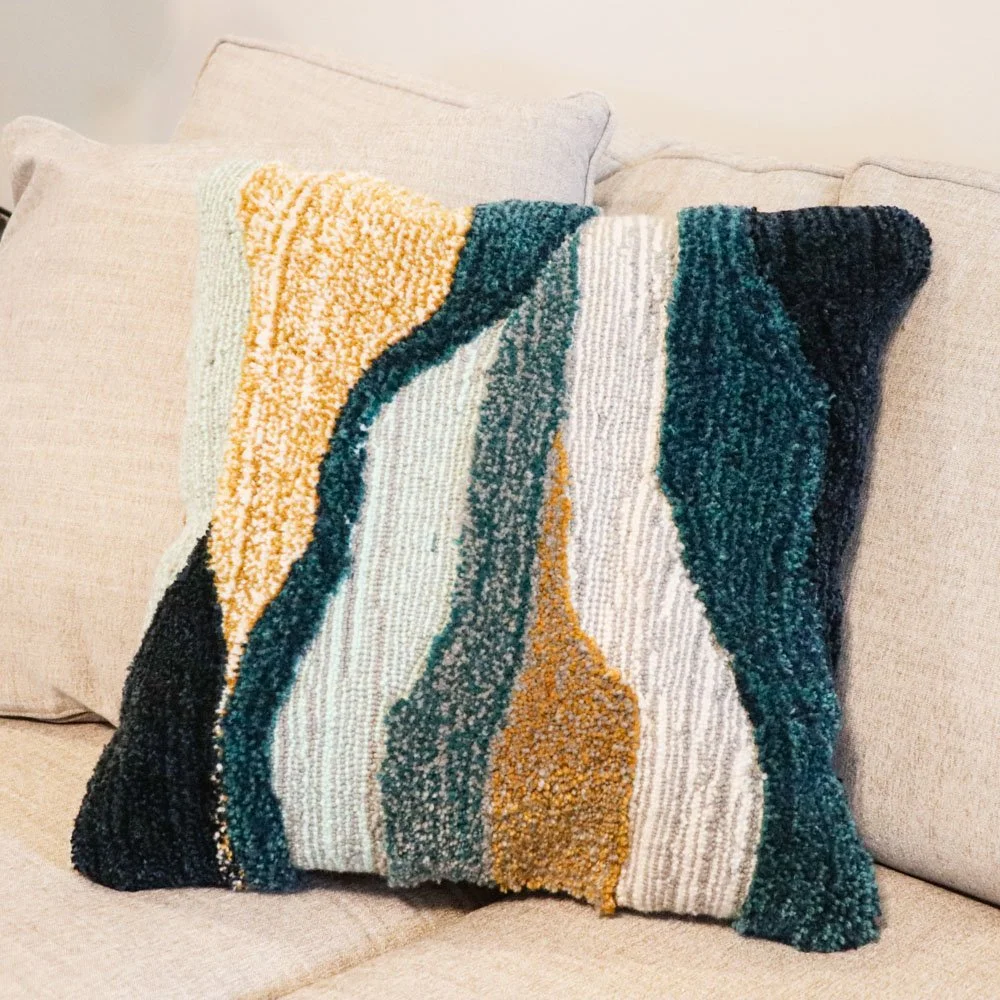Tufted landscapes (and the struggle behind them)
It's been well over 6 months since I picked up my tufting guns, but I'm so glad I did this summer. While this particular fiber art medium is still very new to me, I'm starting to get the hang of it and slowly developing my own style. 3 sets of tufted diptychs are ready to ship & hang in your home, and here's a time-lapse video showing a peek at the process.
While learning to work in any new medium or figure out the nuances of using a new tool can take time (and lot of trial and error), it’s what keeps me going. I need to learn new things, always. Tufting seemed like the next logical step for me once I started expanding on my needle felting work and doing mixed media fiber art a few years back, but tufting has been a rocky road so far. I love that I can work larger and faster, but I am having a hard time accepting that the detail level that I’m able to achieve with punch needle, needle felting, and rug hooking, is just not going to be possible with a tufting gun (or at least not at my current skill level). I had to rethink my ideas and adjust accordingly.
Some of my other struggles when it comes to tufting are purely comfort-related. It’s a very physical art form - you are on your feet for hours and hours, the tufting guns are heavy and they take a toll on hands and wrists in a way hand-work doesn’t seem to effect me. Plus, it’s loud and messy, and I like to keep my studio neat, even though the whole point of a studio is to have a workspace where it’s totally acceptable to have a mess. It seems silly that these drawbacks are part of what’s kept me from tufting for half a year, but I’m just being honest.
I was considering selling my tufting guns and frame, I hadn’t used them in months, they were new and in good condition (and too expensive to just sit here and not be used). I wasn’t looking forward to setting up the frame and having whatever project take over my studio for days on end. Although I may eventually eliminate tufting from my studio I needed to give it another chance, a REAL chance, a chance to be it’s own thing and lead the way to a new style, a chance to change my expectations. It can’t do what I want it to do but it can do a lot of other very cool things. I need to embrace those things.
All 3 of these diptychs have a completely different style, though the subject matter is very similar. One is focused on two-tone gradients, one it’s very abstract and blocky, and the last has a bit of a stained glass or paint-by-number feel. I like all of them for different reasons, and it’s enough to push me to keep trying and keep tufting. I hope to add more tufted pieces to the website later this summer, but for now shop the small collection online.












